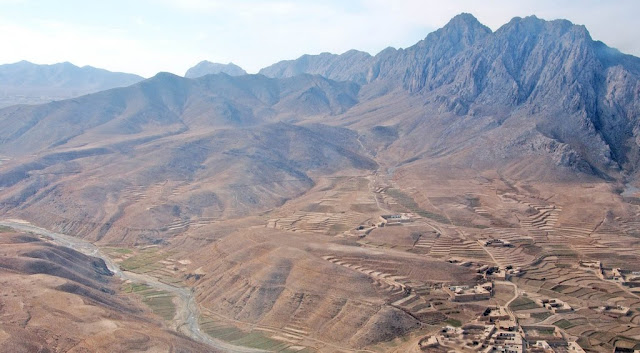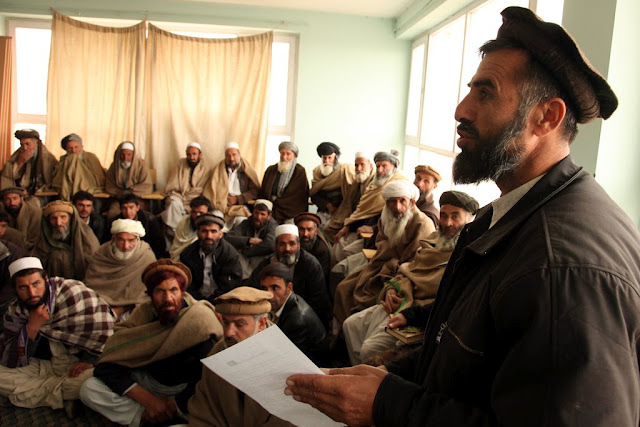Showing posts by Michelle Neukirchen.
-
Copper in Afghanistan: Chinese Investment at Aynak
›Will new investments by the Metallurgical Corporation of China (MCC) in the Aynak copper mine break Afghanistan out of its poverty trap? Will future revenues from the subsoil assets in Logar Province bring peace and stability to the ongoing conflict?
The U.S. Institute of Peace brought together expert panelists to discuss the pitfalls and possibilities related to the Aynak contract. Discussed were current uncertainties in investment plans, future risks related to mine operations, how the various stakeholders of the Aynak project can be more engaged in the process, as well as the planned reinvestment of economic benefits within the broader economy.
Alone, the Aynak Copper Mine’s multi-billion dollar reserves will not bring about security, but its success can be a gateway to future development. According to Lorenzo Delesgues, co-director of Integrity Watch Afghanistan, however, there is also a chance that this conflict-ridden region will find the mines a catalyst for more disputes. According to Delesgues, the potential negative impacts on the surrounding communities and the environment “can be exacerbating factors that might create even more insecurity than what you already have in that area.”Delesgues suggested that certain programmatic alterations needed to be considered by the MCC and the Afghan government to leverage local sustainable economic development beyond Aynak. For Delesgues, local communities need better information about mining’s environmental and employment impacts to improve their decision-making abilities, as many common social and environmental protections are lacking from the current MCC mining plans and activities. An environmental impact assessment, for example, has not yet been carried out, leading to concerns that on-going exploration activities may harm the local environment and downstream populations. To prevent future disputes, Integrity Watch Afghanistan recommends strengthening project monitoring processes and greater public communication and consultation with key stakeholders.
Gary McMahon, senior mining specialist at the World Bank, believes that Afghanistan is in a good position to benefit from the Aynak copper mines. Local employment generation and the MCC’s stated commitment to provide educational, health, and housing services to employees all offer promise for development. There are also contractual obligations for a power plant that will supplement a portion of Kabul’s current demand and the construction of a railway system through Afghanistan, which will extend from China to Tajikistan, and strengthen existing Afghan trade networks.
While the royalty rates established by the Afghan government in the Aynak contract on future mining revenue streams are unprecedented in the mining sector, McMahon fears that the revenue will solely follow international aid flows. “If all that happens is that fiscal revenues [from Aynak] replace foreign aid, the impacts are going to be way less,” says McMahon.
McMahon suggests that, moving forward, the Ministry of Mines and the National Environmental Agency’s capacities for monitoring and evaluation must be improved and strengthened. There also needs to be assurance that the local population gets a “fair share” of jobs and other opportunities, along with continuous consultation of the impact the mines are having on their social and environmental conditions.
In his concluding statements, Ishaq Nadiri, professor of economics at New York University and former senior economic advisor to Hamid Karzai, cautioned the audience about the weight that economics plays in the overall outcome of the Aynak Copper Mine. According to Nadiri, the objective in establishing the Aynak contract was to maximize national benefits. Nadiri offered hope that “the lack of security…[which] emanates from the highly chronic poverty of the country,” could find promising solutions in the wealth of Aynak.
Drafted by Michelle Neukirchen, edited by Julien Katchinoff.
Photo Credits: “River and Mountains of Logar,” courtesy of flickr user AfghanistanMatters and “Logar Province Shura,” courtesy of flickr user IsafMedia. -
The Diane Rehm Show Tackles Water Challenges With ECSP Director Geoff Dabelko
›March 3, 2010 // By Michelle NeukirchenHow is water shaping geopolitics in the 21st century? Is it an underlying factor for state failure and social conflict, or can it drive peace and cooperation? How will climate change reshape global water resources?Recently, on WAMU’s “The Diane Rehm Show,” ECSP Director Geoff Dabelko, author Steven Solomon, and the World Bank’s Julia Bucknall came together to discuss the history, politics, economics, and future of water.
“Climate change exacerbates the water crisis in very severe ways because it manifests itself through water —through floods, droughts, and melting glaciers,” said Solomon.
The World Bank’s Julia Bucknell highlighted climate change projections that indicate average precipitation increases are likely, mostly in the global North. “It is the poorer countries that show up red on the maps with a reduction in precipitation,” she said.
By compounding failing states’ limited capacity to secure existing water supplies for agriculture, sanitation, and human consumption, decreasing precipitation will result in further intensification of global public health and food security crises.
“We need to improve the existing productivity of the water we’ve got,” said Solomon. “We need to use it more efficiently and fairly in a way that protects the ecosystems.”
Countries such as Australia, Israel, and China are leading the way: even under arid conditions, they use innovative methods to remain productive. In Australia, a new regime allows water rights to be traded, even over cellphones, while China established a credit-based system for individual farmers by using remote sensing technology based on NASA data.
Governments are under pressure to address climate change directly, while managing vexing local and regional challenges. “Our political institutions and our political leaders must not deal with the short term and pretend things will go back to a state of normalcy, but [should] progressively and proactively shape and reshape the institutions,” said Dabelko. Countries with traditionally contentious relationships have cooperated to solve common water problems. The Financial Times recently reported on an agreement between China and India to jointly assess trends in Himalayan glacier and snow melt.
Countries with traditionally contentious relationships have cooperated to solve common water problems. The Financial Times recently reported on an agreement between China and India to jointly assess trends in Himalayan glacier and snow melt.
“There are prospects for tensions,” said Dabelko of the Himalayas, “but quite frankly, water is difficult to [obtain] through war. It’s hard to pick it up and take it home.”
To listen to the full audio recording, click here.
Photo: Just Add Water, Courtesy of Flickr Member MΛЯK
Photo: Melting Glacier at Jokuldalur, Iceland 2, Courtesy of Flickr Member, ChrisGoldNY -
VIDEO – Juan Dumas on Natural Resources, Conflict, and Peace
›February 24, 2010 // By Michelle NeukirchenMediation and conflict resolution around natural resources require “long-term engagement, timely interventions, and lots of flexibility,” says Juan Dumas, senior advisor for the Fundación Futuro Latinoamericano in Quito, Ecuador. The Woodrow Wilson Center and the Fetzer Institute hosted Dumas for a roundtable event on Pathways to Peace: Stories of Environment, Health, and Conflict. In this interview with ESCP Director Geoff Dabelko, Dumas shares key lessons learned from his experience with his NGO that specializes in prevention and management of socio-economic conflicts around natural resources.
In order to overcome challenges posed by current funding procedures, the foundation has been trying to establish an “early-action fund” that would provide flexible funding to facilitate conflict resolution dialogue. “With the right capacities at the right time… you can make a difference… you can prevent the escalation of conflict into violence… and create a governance path for that conflict to be addressed in a different way,” Dumas says. -
VIDEO—Daryl Collins: Portfolios of the Poor—How the World’s Poor Live on $2 a Day
›February 12, 2010 // By Michelle Neukirchen“The poor face a triple whammy,” Daryl Collins, senior associate at Bankable Frontier Associates and co-author with of Portfolios of the Poor: How the World’s Poor Live on $2 a Day, tells ECSP Director Geoff Dabelko. The Woodrow Wilson Center hosted Collins and her co-author, Jonathan Morduch, for presentations at the Center and on Capital Hill last September. “They not only have low incomes, they also have very irregular and unpredictable incomes…. The $2 doesn’t come every day. If you did have $2 every day, you’d be solving half of your problems.”
Whether farmers challenged with seasonal incomes or small entrepreneurs fighting to cope with irregular daily wages, Collins has found that the poor strive to actively manage their financial lives. Households, however, often lack the regulated financial tools necessary to do so, sometimes leading to creative, local solutions.
In Portfolios of the Poor, lessons from the field uncovered a social grant system in South Africa that provides old-age pension holders and people with young children dependable monthly income supplements. Through comparison studies with countries without similar grant systems, Collins and her co-authors found the importance of dependable cash-flows staggering. “There was a whole financial engagement that could take off around that regularity,” she said. “You didn’t see [that] in India and Bangladesh.”




 Countries with traditionally contentious relationships have
Countries with traditionally contentious relationships have 

